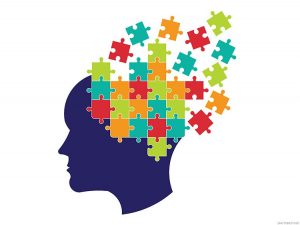
What is autism? This is a very difficult question for people to answer for a variety of reasons. The biggest reason is because a wide spectrum of symptoms is experienced by individuals. This is because Autism Spectrum Disorders (ASD) are not caused by a specific gene mutation, but rather by a vast variety of environmental and genetic factors that all play a part in how the disease is presented in individual cases. Three of these factors will be discussed: Neural Connectivity, Mirror Neurons, and Excitation-Inhibition Imbalance. After discussing these factors, hopefully we will have a better understanding of what may lie as the root of the problem for ASD.
Neural Connectivity
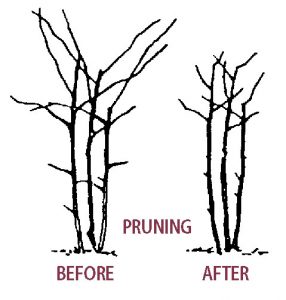
In individuals’ brains with ASD, there is a significantly increased number of neurons. This is because there is a problem with ‘pruning’. In healthy brains, non-functional neurons are pruned away to give more room for working neurons to work and actually increase their power. This pruning process is done a lot with the mTOR pathway. This pathway enables apoptosis (cell death) and autophagy (cell absorption) to take place and effectively prune out the areas that are overgrown/unneeded. When the pruning does not take place, it leaves a crowded circuit causing lots of extra ‘noise’ causing the brain to function less efficiently. This is analogous to plants. Unhealthy branches are pruned off to give room for healthy ones to grow further and make the whole plant healthier.
Mirror Neurons
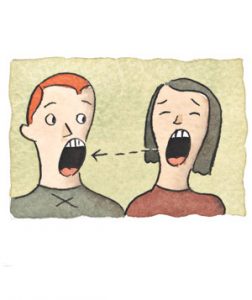
Do you ever wonder why you yawn when you see somebody else yawn? This is because of mirror neurons. Mirror neurons form connections that enable an individual to learn from its environment by imitation. In individuals’ brains with ASD, these mirror neurons are much less concentrated and possibly broken. This could possibly be the cause of those with ASD to have a lack of empathy for those around them. This could also cause lack of understanding of other individual’s movements and lead to the poor development of communication skills exhibited by many of those who suffer from ASD.
E/I Imbalance
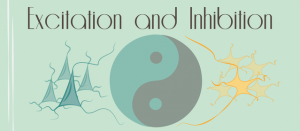
There is a delicate balance in the brain called excitation and inhibition. Glutamate neurotransmitters are excitatory and GABA neurotransmitters are inhibitory. When working effectively, this balance gives the proper action potential to cells enabling them to fire or to rest. However, when this balance is not maintained only glutamate neurotransmitters can be activated. This causes excessive excitation in the cell. The glutamate then becomes excitotoxic and can kill cells, causing further damage to neurons and neural connections in the brain.
Closing
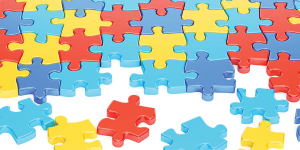
Though we have just scratched the surface of the possible causes of ASD, this does help to give us an insight into what is happening in the brains of those around us that live with ASD. It’s important for us to try to understand these things as ASD is becoming more and more prevalent as 1 in 68 children today are diagnosed as being on the spectrum in some way, shape, or form, so we likely know someone living with ASD or we will know someone living with it in the future. As we know there is no real cure for ASD right now, but the first step to curing something is to understand what is going on and to identify the problem. Hopefully sometime soon we can start to put all of the pieces in place and figure out what is going on.
Image 1: https://www.google.com/url?sa=i&rct=j&q=&esrc=s&source=images&cd=&cad=rja&uact=8&ved=2ahUKEwjm5-GouOjdAhWS2FMKHdZ5ABQQjRx6BAgBEAU&url=https%3A%2F%2Fwww.advocate.com%2Fcommentary%2F2017%2F3%2F10%2Fintersectionality-autism-and-homosexuality&psig=AOvVaw1BYhUZHItYbanwbFEWa_d1&ust=1538593128147246
Image 2: https://www.google.com/url?sa=i&rct=j&q=&esrc=s&source=images&cd=&cad=rja&uact=8&ved=2ahUKEwjX_tvSsejdAhWHtlMKHXmpD_QQjRx6BAgBEAU&url=https%3A%2F%2Fwww.starkbros.com%2Fgrowing-guide%2Fhow-to-grow%2Fberry-plants%2Fblackberry-plants%2Fpruning&psig=AOvVaw0UYxq3b2QfhfeY1U-4LFTt&ust=1538591360803633
Image 3: https://www.google.com/url?sa=i&rct=j&q=&esrc=s&source=images&cd=&cad=rja&uact=8&ved=2ahUKEwiA-uijsujdAhVJ2VMKHbY4CPYQjRx6BAgBEAU&url=http%3A%2F%2Femotionaldetective.typepad.com%2Femotional-detective%2F2011%2F07%2Fmirror-neurons.html&psig=AOvVaw0VF8plYgQMis2PeXiQ3wxi&ust=1538591521789825
Image 4: https://www.google.com/url?sa=i&rct=j&q=&esrc=s&source=images&cd=&cad=rja&uact=8&ved=2ahUKEwir3KPhtejdAhUL2FMKHTGhBJwQjRx6BAgBEAU&url=https%3A%2F%2Fwww.psychologytoday.com%2Fus%2Fblog%2Fconsciousness-self-organization-and-neuroscience%2F201701%2Fexcitation-and-inhibition-the-yin-and&psig=AOvVaw2dTF0zuDod7TowQE63OTKt&ust=1538592472441778
Image 5: https://www.google.com/url?sa=i&rct=j&q=&esrc=s&source=images&cd=&cad=rja&uact=8&ved=2ahUKEwiDyLHpvejdAhUOtlMKHcxBBqsQjRx6BAgBEAU&url=https%3A%2F%2Fleader.pubs.asha.org%2Farticle.aspx%3Farticleid%3D2595625&psig=AOvVaw1KFyRY_Nfdww24O0CDTOkh&ust=1538594564362690